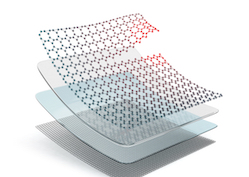Self-healing robots? Another sci-fi concept comes closer
Roboticists at the Vrije Universiteit Brussel (VUB), with input from the EU-funded SPEAR project, have designed soft robots that can heal themselves. New research published in the Science Robotics Journal highlights the results the team has achieved. The robots are constructed from flexible materials that enable them to grab delicate objects making them of use the food industry or in minimally invasive surgery, amongst other applications. ‘Soft’ robots are also used in rehabilitation and arm prostheses. Their form helps them absorb shocks and protects them from mechanical impacts but, as the researchers say in their paper, ‘(…) the soft materials used for their construction are highly susceptible to damage, such as cuts and perforations caused by sharp objects present in the uncontrolled and unpredictable environments they operate in.’ Soft robots can be used to move across rough terrain or enter spaces through tiny cross sections. When in contact with another objects, soft actuators can adapt their shape, making them good candidates for grippers that have to handle soft objects, such as fruit or vegetables. A vast part of soft robotics is pneumatic-actuated making over-pressuring is a common cause of damage. To maximise the potential benefits of such robotics while trying to minimise the cost and time wasted by their susceptibility to damage, (soft pneumatic robotics commonly experience perforations and leaks due to excessive pressures or wear during operation), the team constructed their soft robotics entirely out of self-healing elastomers. Researchers used Diels-Alder polymers in their construction to develop three applications of self-healing soft pneumatic actuators (a soft hand, a soft gripper, and artificial muscles). Using these soft materials, an inherent compliance is created, which is comparable to the biological compliance of natural organisms. The manufacturing method of the actuators exploits the self-healing behavior of the materials, these polymers were given the ability to heal microscopic and macroscopic damage, first recovering their original forms and then healing thoroughly. The team decided on the three applications as they have the widest scope: a soft hand, interesting to the team since these would be used in social robots, active in dynamic environments that have not been pre-programmed. As such they are likely to encounter sharp objects, such as metal edges, shattered glass, sharp plastics, or just the edge of a piece of paper. Secondly they worked on a soft pneumatic gripper which could be used to handle delicate objects in sorting and packing lines for example in fruit and vegetable sorting where sharp twigs can be a hazard. The third application was the contractive pneumatic artificial muscles often used to integrate compliance in robotic systems. These can produce high levels of force but this requires overpressure that can lead to increased wear and the formation of punctures and leaks. The researchers managed to achieve realistic macroscopic damage that could be healed entirely using a mild heat treatment. In all three applications, damage could be healed entirely using a self-healing (SH) procedure requiring mild heat (80°C). No weak spots were created at the location of the scar, and the actuator performances were almost entirely recovered after every healing cycle. SH materials are a relatively recent phenomenon; the term first emerged in 2001. Applications now include coatings on mobile phones that can self-repair scratches; the car industry is also making use of the materials. There are promising indications for their application in the aerospace sector and stretchable SH films are being developed with high potential for artificial skin applications. The SPEAR (Series-Parallel Actuators for Robotics) project is setting out to answer all the research challenges and explore the frontiers of this new application, leading to a tremendous impact on all engineered, actuated systems, especially in robotics. For more information, please see: Project website
Countries
Belgium



